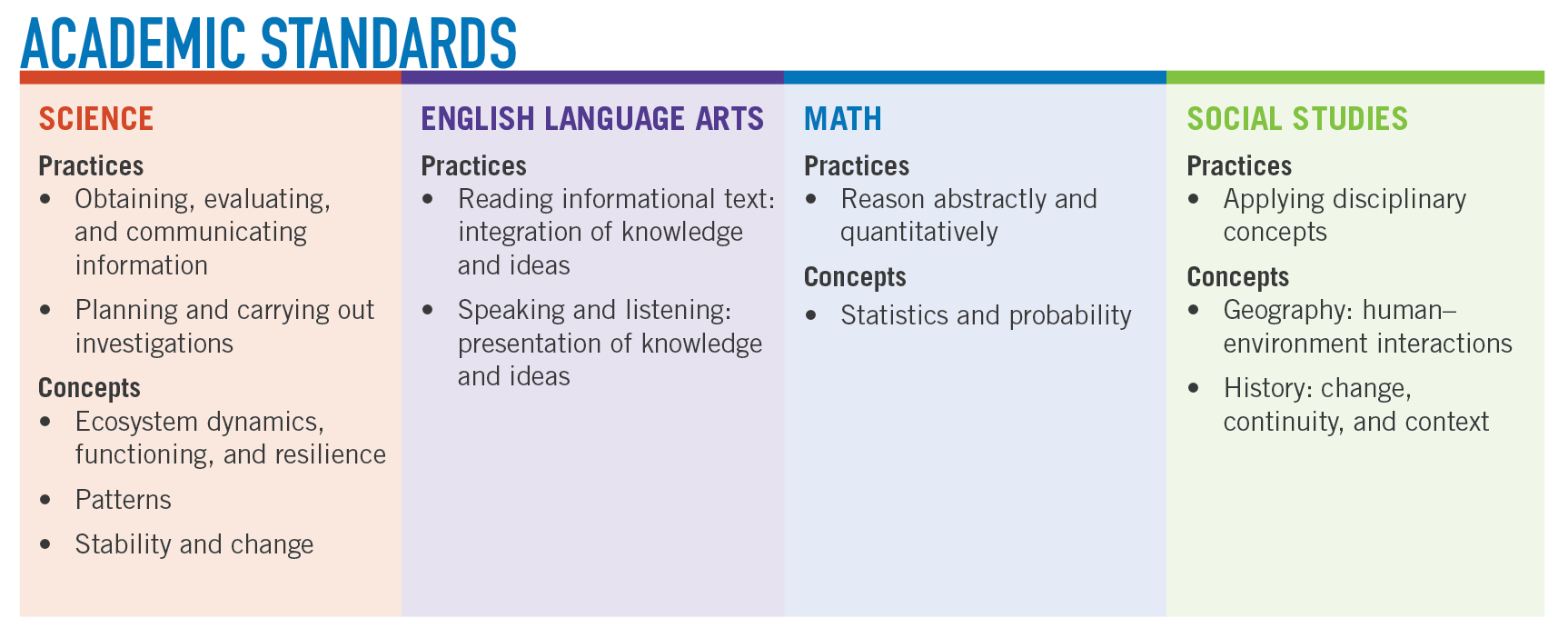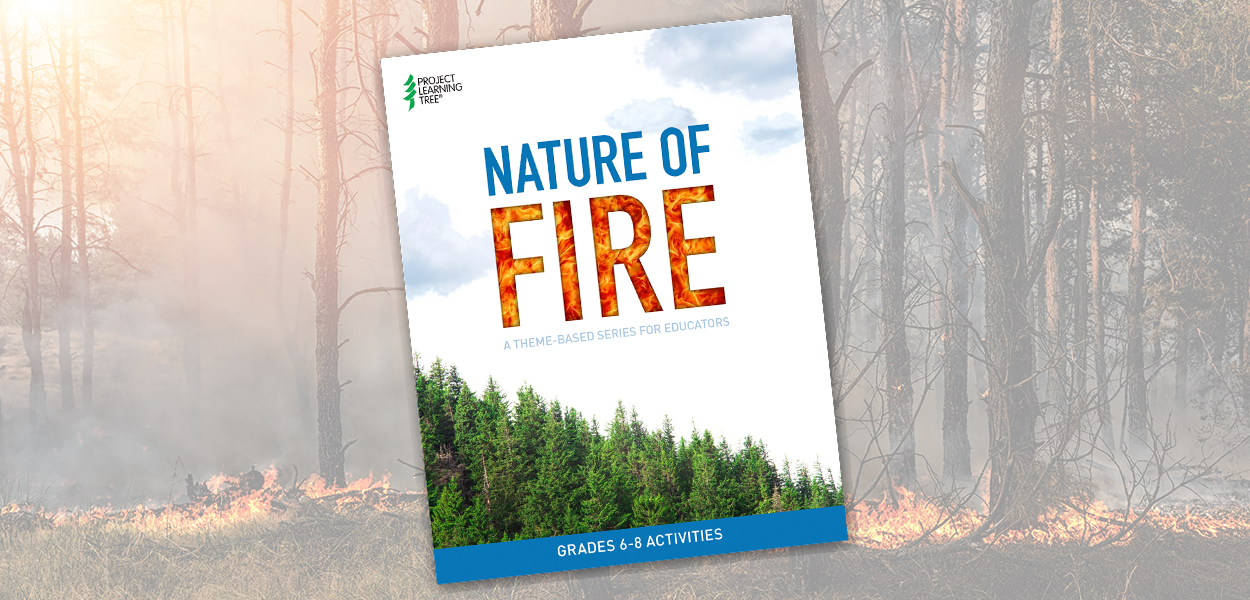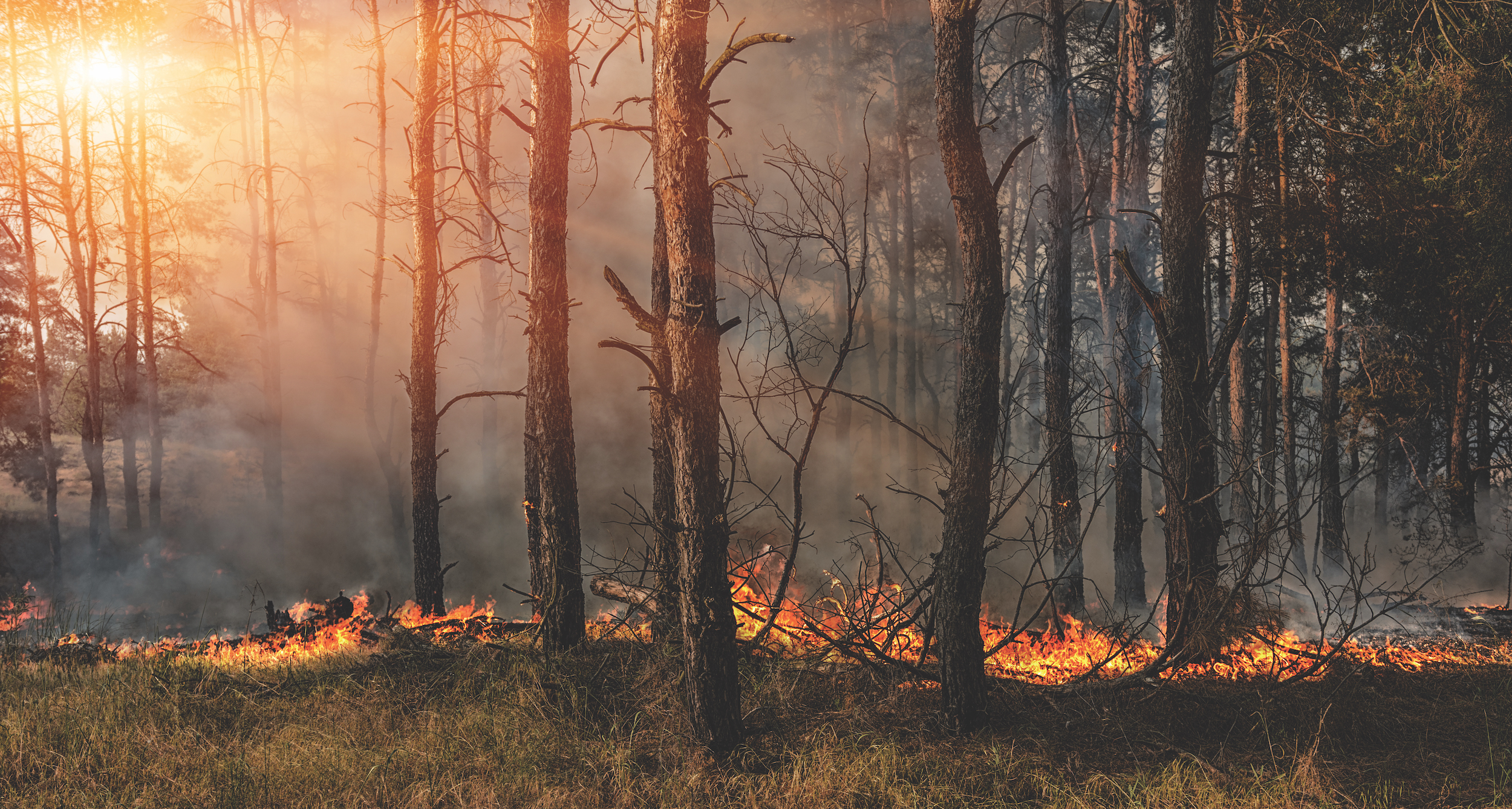Nature of Fire
Nature of Fire for Grades 6-8
PLT’s Activity Collection provides content in support of an identified theme for a particular grade level. Designed to be flexible, the activities that comprise each collection can be used as individual, stand-alone lessons, or all together as a cohesive unit of instruction using a storyline technique.
Nature of Fire features three PLT activities for educators of students in grades 6-8. Designed to be flexible, the activities can be used as individual, stand-alone lessons, or all together as a cohesive unit of instruction using a storyline technique.
Fire Management
Raising the awareness of fire management and the risk of wildfires, as well as the undesirable effects of fire such as the impact on carbon emissions, water quality, species habitat, human health and public safety, are considered critical in sustainable forest management. Fire management is a key part of the Sustainable Forestry Initiative (SFI) Forest Management Standard. The new SFI Fire Resilience and Awareness Objective requires SFI-certified organizations to limit susceptibility of forests to undesirable impacts of wildfire and to raise community awareness of fire benefits, risks, and minimization measures. For more detailed information, see the SFI 2022 Standards and Rules.
Sustainable forest management includes strategies to reduce catastrophic wildfire, ensure resilient forests, maintain forests, and restore degraded lands. Resilient forests are necessary to confront today’s challenging environmental issues, including wildfire and climate change.
Nature of Fire features three PLT activities for educators of students in grades 6-8. Designed to be flexible, the activities can be used as individual, stand-alone lessons, or all together as a cohesive unit of instruction using a storyline technique.
- Nothing Succeeds Like Succession: Students read a story about forest succession and investigate the connections between plants, animals, and successional stages in a local ecosystem.
- Living with Fire: Students learn about the three elements that a fire needs to burn and find out how this “fire triangle” can be used to prevent and manage wildland fires.
- Burning Issues: Students graph changes in atmospheric levels of carbon dioxide (CO2) over the course of several decades to explore the relationship between CO2, the Earth’s climate, and wildfires — and suggest ways to reduce the negative effects of fire.
Learning Progressions
Storylines provide connectedness and continuity to individual activities and can serve as the instructional “glue” that holds areas of knowledge and skills together. The activities in Nature of Fire may be linked together into a unit of instruction using a storyline technique, such as the one that follows.
- Guiding Question: How is wildland fire both a cause and effect of ecosystem change?
- Storyline: Students investigate the role of fire in ecosystem change.
Burning Issues
Students graph changes in atmospheric levels of carbon dioxide (CO2 ) over the course of several decades and identify possible reasons for those changes. They also explore the relationship among CO2, the Earth’s climate, and wildland fires.
Living with Fire
Students learn about the three elements a fire needs to burn and find out how this “fire triangle” can be used to prevent and manage wildland fires, particularly in the wildland–urban interface.
Nothing Succeeds Like Succession
Succession is a natural pattern of change that takes place over time in a forest or other ecosystem. Students read a story about succession and investigate the connections among plants, animals, and successional stages in a local ecosystem.
The Global Climate
Using data collected from Mauna Loa, students graph changes in atmospheric levels of carbon dioxide (CO2) over the course of several decades and identify possible reasons for those changes.
Academic Standards
Classroom educators and nonformal educators alike need to ensure that instruction helps diverse learners meet rigorous academic benchmarks. Each PLT activity displays explicit connections to practices and concepts mandated by the following national academic standards. Here is an example from “Nothing Succeeds Like Succession.”

Login to download supporting materials such as appendices and teaching tips.
Login





